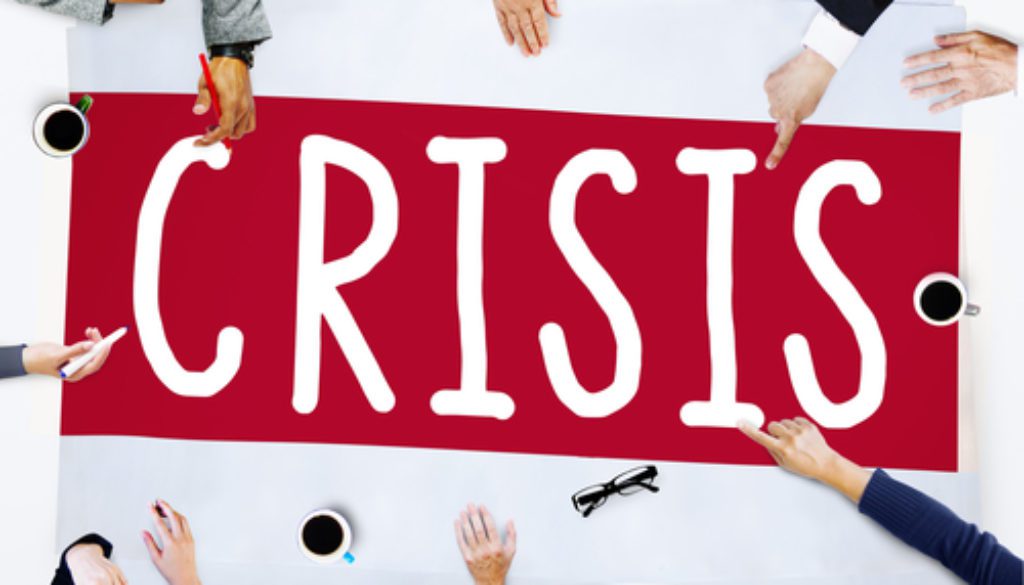How Corporate Communications Play an Essential Role in Crisis Management
A business crisis is any event that can cause a major disturbance for a business. An unexpected problem may pose a threat to an organization’s stability. It may negatively impact the reputation or the finances of the corporation. And during a crisis, time is often short, and decisions must be made immediately.
One recent global crisis that comes to mind, of course, is the COVID-19 pandemic in early 2020. Countless businesses faced disruptions to operations, threats to the health and safety of employees, and communication challenges both internal and external.
The pandemic has emphasized the importance of strong crisis management skills, including clear and accessible crisis communications, by organizations that provide essential services. In this blog, we look at ways in which the water industry addressed communication challenges during the COVID-19 pandemic, and discuss communication tools for other organizations to emulate their success.
How a global crisis affected the water industry
At the start of the COVID-19 pandemic, there were a lot of questions being asked about how the virus is transmitted. Unfortunately, due to a lack of understanding, many of the questions were answered incorrectly or in a manner that could be misinterpreted, leading to public confusion, conflicting versions of the same advice and the failure to comply with recommended guidelines.
One of the biggest concerns was that the virus could be transmitted through the water supply. This concern led to panic buying bottled water and a decline in residential water consumption, which then negatively impacted water companies as manufacturing plants closed.
Faced with public mistrust of their product and declining revenues, water companies launched an information campaign by email, through news releases, bill inserts and social media. They assured people that they would provide communities with safe, clean and reliable services during the pandemic while also protecting the health of employees. Despite their efforts, bottled water sales increased 50% by mid-March of 2020.
Types of crises your corporation may face
The lasting impact of the COVID-19 pandemic cannot be denied, but it is not the most common type of crisis your corporation will face during day-to-day operations. Other types of crises may include:
- A public relations crisis. This can occur when an employee or person associated with the corporation is involved in highly-publicized and likely unflattering media coverage. An individual’s poor reputation can reflect the same onto the corporation’s.
- A workplace violence crisis. Workplace violence continues to remain a problem for employees, even throughout the pandemic. Harassment, conflicts and threats of violence at work can sow doubt and mistrust among employees if they are not taken care of properly.
- A financial crisis. A financial crisis may occur if demand for a business’s products or services drops significantly. The business may lose value, and investors and stakeholders may lose faith in the future of the company.
Knowing what possible crises your company may face will help you prepare for, recover from and even prevent some incidents from happening.
Be a trusted source of information
Once a crisis has been identified, it’s time to begin the crisis management phase. During this phase, it’s important to look at the crisis from each angle. Determine how to prevent the crisis from further impacting your business, and what can be done about any damage it may have already caused.
In April 2020, the American Water Works Association (AWWA) and Association of Metropolitan Water Agencies (AMWA) commissioned an assessment of the financial impact of COVID‐19 on the water industry. The assessment found that the COVID-19 pandemic negatively impacted the drinking water sector by an estimated $13.9 billion. Furthermore, revenues decreased an overall 16.9%.
While some of the negative impact could be attributed to water companies eliminating shut-offs for non-payments, a decline in consumer confidence was likely to blame as well. it was clear something had to be done to convince consumers of the safety of the drinking water supply.
AWWA hosted a webcast focusing on best practices for handling communication challenges and building public trust during the COVID-19 pandemic. Their main message encouraged water professionals to “be a trusted source” of information, which would build up public trust again.
Attended by nearly 2,000 delegates, the webcast included presentations on risk communication and messaging, as well as discussions on spokesperson selection, social media and employee safety. The webcast had the desired effect because, by the end of June, residential water consumption exceeded pre-pandemic levels.
The importance of crisis communication
AWWA’s early response to the crisis is an excellent example of effective crisis communication. Crisis communication encompasses the collection and spread of information regarding an emergency or other critical event. When done well, crisis communication protects an organization’s reputation or business from being damaged, or damaged further.
Though crisis communication often falls under the scope of public relations representatives, it’s not solely their job. Because PR professionals work with executives, stakeholders, customer service representatives and human resources, crisis communication is the responsibility of the organization as a whole.
In this day and age, the flow of information is constant and instantaneous. But not all information can be trusted. Having a solid crisis communication plan is an important part of having a strong crisis management plan.
That’s why AWWA’s response to COVID-19 misinformation is exemplary. Their crisis communication plan involved setting the record straight and regaining public trust. Their larger crisis management plan involved being proactive, gathering data, being transparent and communicating the right information to consumers.
The positive effects of frequent, transparent communication
Multiple companies took AWWA’s advice to address communication challenges they were encountering and found success. In early 2021, AWWA published a case study demonstrating how American Water improved its messaging by following its best practices.
American Water changed its public-facing information strategy following AWWA’s webcast. The company combined its internal communications, human resources and safety and security teams to ensure company employees had the necessary resources to do their jobs safely, whether they were working from home, from an office, or in the field.
New modes of communication were implemented to keep employees up to date, deliver ongoing COVID-19 safety tips and reinforce the message that the safety of American Water’s employees, customers and communities is a priority. Weekly video messages were sent by the chairman to employees to thank them for their efforts. Employees were encouraged to take vacation time to recharge their batteries. They were also required to complete daily wellness checks via their mobile phones.
American Water also refined its public messaging to emphasize the company’s commitment to caring for customers. They assured customers experiencing financial hardship that they would work with them. The company also equipped field employees with communication tools that would allow them to speak to customers via video. These tools helped employees discuss or diagnose issues without having to enter customers’ homes and business premises, keeping both parties safe from the possible spread of COVID-19.
The role of frequent, transparent and encouraging communication in corporations should not be underestimated. Research has shown employers are more trusted for pandemic news than the government. Organizations should take advantage of their important position in the community to develop risk communication strategies, build trust from the inside out, and be part of the solution – both during the pandemic and afterward.
Tips for crafting a crisis management plan
When a crisis occurs, you must have a plan of action in place that best matches the scenario. An effective crisis management plan can help you respond to the crisis quickly, recover from negative effects and prepare for any future threats to your business.
Identify threats to your corporation
Potential threats depend on your industry, location, size and other factors. If your headquarters are stationed in California, for example, you know that you should prepare for weather events like wildfires or severe droughts. Other threats may occur no matter your location or industry, such as acts of terrorism, workplace violence, or the COVID-19 pandemic.
After identifying each threat, determine how they will impact your business. Who will be affected and how? What is the estimated financial impact? Will operations shut down completely, or can some operations continue remotely? What are the long-term effects?
Create a response plan for each threat
Now that you’ve identified threats and their impact on your business, you have the information you need to form your response plan. Consider what you can do to minimize damage or negative effects of each threat.
Don’t forget to consider how your business will react when the threat is actively occurring. Does your team know who to call or what information to relay to first responders? Are they aware of building routes or evacuation plans?
Communicate your plans to your team
Even the best crisis management plans will fail if they are not communicated properly. Perhaps the most important step in carrying out your crisis management plan is ensuring your organization knows what to do during each threat.
That is why it is essential to have a communication system that delivers the critical information your team needs when it is needed most.
Have a crisis communication strategy
Internal communication is paramount, but what is said to the public is an essential part of crisis communication. Each situation is unique, so each response will be also. However, the following tips will help you coordinate your crisis communications strategy:
- Take action. Avoid “no comment” as a response to a crisis. This reaction may look defensive, evasive, or uncaring. Even if you’re working on developing a more detailed response, it’s worthwhile to let the public know that you’re aware of the crisis, are handling the situation and will have an update in the future.
- Listen to your audience. Monitor what information is being shared on social media or on the news. This will help you prepare an appropriate response that answers questions your audience has, or corrects any misinformation being spread.
- Be transparent and real. Crisis communication is not the time to sound neutral or devoid of emotion. Check the tone of your response to ensure that it is natural and human, not formal and corporate. This is especially important if your business made a mistake or has been painted in a negative light. Honesty and authenticity will help repair your reputation more quickly.
When a crisis ends, set some time aside to analyze the situation, your organization’s response, the impact of crisis communications on the public and overall performance. Figure out what worked and what didn’t. Pinpoint any improvements that can be made to your crisis management plan and/or crisis communication strategy.
Prepare for the unexpected with Rave Mobile Safety
We don’t know exactly what the years ahead of us will bring post-pandemic, but we are facing even more challenges now worldwide. With so much uncertainty and increasing regularity of threats to health and safety, it is vital that corporations have a communication and collaboration system they can trust in place.
Having a reliable communication and collaboration system will strengthen your crisis communication strategy as well as your crisis management skills. Rave Mobile Safety is proud to provide many corporations with communication tools that aid in their crisis management plans.
Rave Mobile Safety provides corporations with tools such as:
- A secure, FedRAMP-authorized mass notification system
- A personal safety app to monitor and communicate with remote or traveling employees
- Emergency communication tools that improve response and recovery
- And many more tools and resources for emergency and non-emergency matters
Rave is a market leader in critical communication and collaboration methods. It is the system of choice by corporations such as General Electric, Lyft, Tyson and many more. To learn more about Rave’s solutions for corporations, or to learn about customizing your own solutions package, schedule a demo today.




